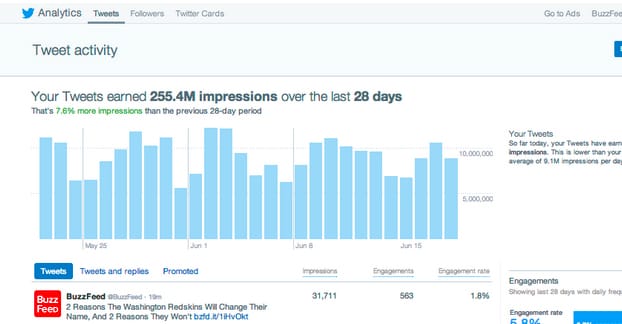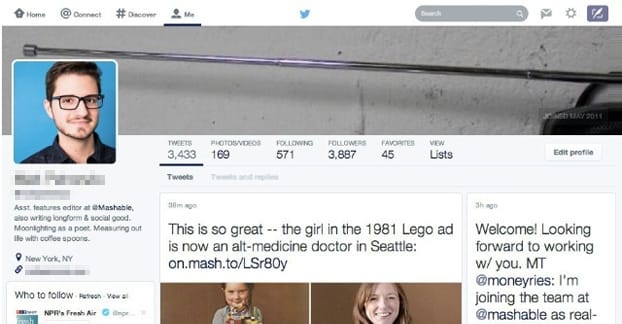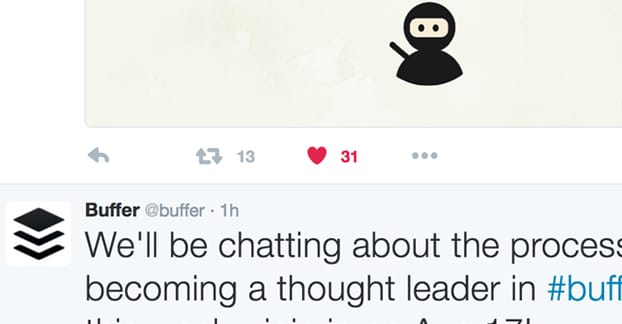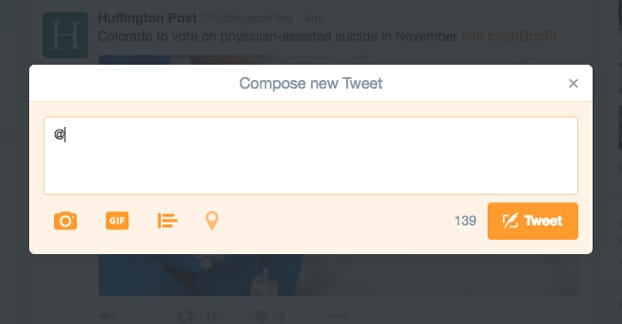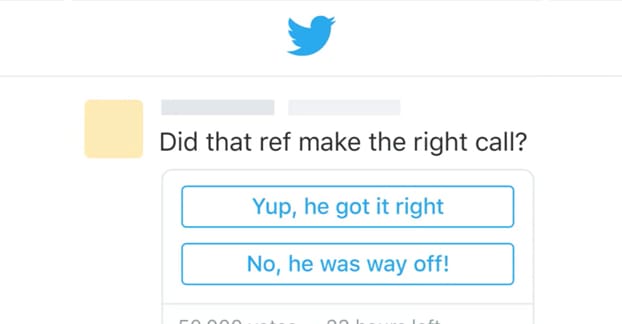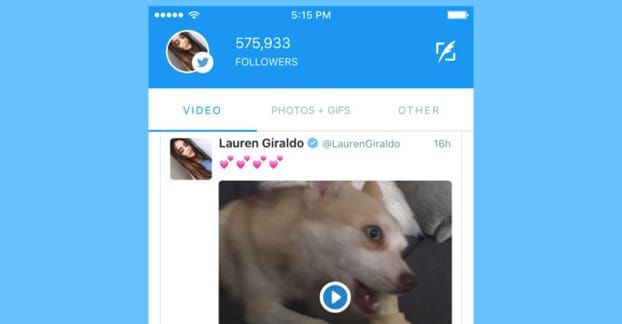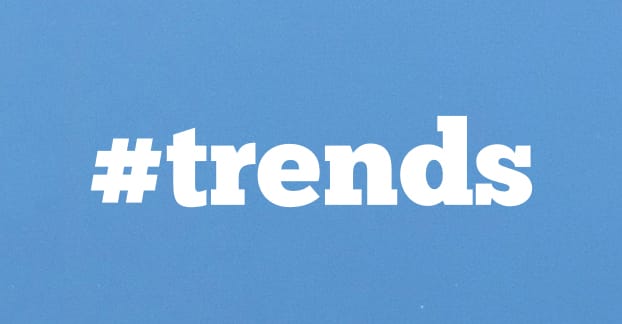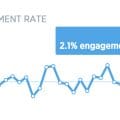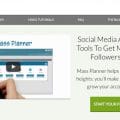Twitter engagement is pretty low in general, and it gets worse the more followers you get. A small business with 100 followers might get 1 retweet per tweet, and that’s a 1% engagement rate. Meanwhile the most followed account on Twitter, Katy Perry’s, gets around 4,000 retweets per tweet, out of 90 million followers. That’s a fraction of a hundredth of a percent, barely even a blip on the radar.
Engagement is also incredibly important. Retweets get your content seen in front of more people. Likes show you who is enjoying your content enough to give it an acknowledgement. Replies help spur conversation, which can pull in more people and make the people already engaged more invested in the conversation.
Rather than focus on how to grow an audience, you should take some time to figure out what makes your current audience tick. What powers them, what gets their blood flowing, what makes them want to engage with your content?
I’ve come across a lot of different tips in my research, but I’ve been able to categorize them more or less into these nine groups. Each is an area of your marketing you should be able to optimize, if you give it some thought.
1. Your Account Presence
The first section is all about your profile, your bio, your appearance, and how you present yourself on Twitter. It’s all passive information, it has nothing to do with your content, but it’s very important.
Think about the standard new user egg profile picture. Who wants to trust or follow someone who can’t be bothered to change their profile?
- Make sure your biography section is interesting and snappy. Use decisive action words and exotic descriptions, but only so long as they’re accurate. Avoid cliché words like guru. Remember that this is searchable both in Twitter search and Google search.
- Make sure you have a relevant avatar. Often times this should be a smiling photo, though some entities and brands don’t have that luxury. Use a person whenever possible, and if you must resort to a logo, change it up from time to time.
- Make your top banner extremely interesting. It shouldn’t be relied upon to convey information, so just make it a good picture that features you, your product, or your aesthetic.
Every few months, review all of the above and check to see if it needs to be updated. Bio is most likely to be updatable, but profile picture can also be changed with relative frequency, so long as you remain identifiable.
2. Initiate Engagement
The second section is all about initiating interaction on your part. The idea is pretty simple; when people know you’re active and can see that you like chatting and responding to people, they’ll be more likely to interact with you. I know one of the main reasons I don’t reply to some tweets is because I know the poster is unlikely to ever acknowledge me.
Engagement breaks down into three categories. You should do each of them.
- Reply to tweets made by others. Replying to interesting and insightful tweets is a great way to get people paying attention to you as a person on Twitter. They start to notice that this guy keeps saying interesting things, and will check you out to return the favor.
- Like tweets made by others. Likes are the bare minimum level of engagement possible, so they’re great for simple agreements and acknowledgements. They should be your most used form of engagement; hand them out like candy.
- Retweet content posted by others. This is possibly the most intensive form of engagement because it allows for an entire comment on top of the retweet, and it shows up to your followers, unlike a reply or a like. Retweet sparingly, but do it to emphasize great content you think your followers want to see.
3. Respond to Engagement
The third section is all about responding to incoming engagement in the right way.
We all like to see retweets, replies, and likes, but what do you do when you get them? If you play your cards right, you can encourage more and keep it coming.
- When someone likes your post, there’s no direct response you can make. However, you can click through to their profile to see who they are and what they post. Maybe a recent tweet of theirs is worth a return like. Maybe their feed is right up your alley and you can follow them or add them to a list. The options are there.
- When someone replies to your post, if it’s a private reply – that is, starts with the @ symbol – you should respond in kind. A private conversation can be very beneficial towards retention of that follower. If their reply is suitably excellent, you can retweet it as well.
- When someone retweets one of your posts, like the retweet and do what you would do if they liked it; check their profile and take action accordingly.
- When someone mentions you or makes a public reply – that is, a normal reply with a . in front of the @ to make it public – you can reply publicly as well. You can either do a .@username reply, or you can retweet it and answer in the comment field.
4. Ask Questions
One strategy I’ve been using recently is to make sure that every single day, one of the tweets I post is a question. There are an infinite number of different questions you can ask, but they come in two basic forms; open and closed.
Closed questions are questions that don’t have room for debate or caveats in their answers. They are simple yes or no questions, questions with one-word answers, and questions for facts. “Where do you live?” is a closed question, because it has one single answer for most of your audience.
Open questions are the questions that spur conversation, lengthy answers, or debate. As a consequence, however, they take more effort to get people to answer. More people will reply with a “yes” than they will with a reasoned argument. Open questions can spur a lot of great engagement, but it takes more work to get it. Closed questions, by contrast, have higher engagement rates but lower retention.
Closed questions are great for engagement numbers. Open questions help you learn about your audience, get product feedback, and work to improve your future marketing. Mix up both to get as many people engaging as possible.
5. Curate Content
In addition to posting your own content all the time, you should also spend a reasonable amount of time and energy looking for new, excellent content to curate. Curated content is wonderful for a lot of reasons.
- It’s high quality content you didn’t have to make.
- It’s produced by people you would like to engage as influencers, and sharing it can get you started on that relationship.
- It’s sufficient to raise the overall quality level of your feed while boosting volume.
- It shows you’re part of the community and aware of what’s going on around you.
All of these benefits help you get additional engagement. Some of that engagement will come from people retweeting your retweet or liking the post that accompanies it, but a lot of it will also come from those influencers you’re engaging. People monitoring those influencers and their hashtags will see your retweet and may check you out, broadening your audience and your reach.
6. Post Multimedia
Multimedia is established as an excellent driver of engagement on all forms of social media. Some, like Instagram and Pinterest, are even centered around it. Twitter isn’t, but it’s rare that you find a good account that isn’t primarily driven by multimedia in some form or another.
You can even see the effect on Katy Perry’s account. Starting from the most recent posts as of this writing, you see a single emoticon post with 4K retweets, a video teaser with 9.6K, a Vevo link with 7K, a couple of text posts with 3.6 and 5.4, an image promo with 12K… you get the picture.
What forms of multimedia should you use?
- Pictures, alone, are worth a thousand words. A few good pictures can do wonders for engagement for those posts, and a consistent stream of good pictures is great.
- Collages, made up of four pictures generally laid out in a grid, can be great for portraying different elements of the same concept, or for telling a quick story. They’re excellent for engagement but take more work to make and can fall flat if the story isn’t good enough.
- Animated gifs are wonderful because they play quickly and easily, even on mobile, though you do want to keep in mind length and quality of the image when you upload one.
- Vines and other short videos are wonderful, some of the best content on Twitter, but they’re dangerous because you have to have a high quality production environment to make them. Vines with low production values won’t do you any good.
Hashtags really are worth their own article. That’s why I’ve written several. Take the time to check them out; they’ll tell you everything you need to know about hashtags themselves.
The trick with hashtags is to be consistent in their usage. You need to include the right number of them in your posts, without spamming them or using the same tag too often. Don’t go for overly generic tags like #SEO for every single tweet; you’re just adding on worthless filler at that point. Consider each individual hashtag like a community of its own. Give it the attention it deserves, don’t spam it, and reach out to it sparingly.
8. Engage with Trends
Trends are tricky, because they’re special time-sensitive hashtags you need to engage with, except they’re also related to current events. You need to be careful about how you engage with them.
First, you need to really research what the hashtag is about. This means more than just looking into the top hundred or so tweets; you need to really look at what’s going on in the world, and on Twitter, to figure out what it’s really about. Don’t make the DiGiorno Mistake. You also don’t want to try to engage with a primarily Spanish audience when you’re an English business, for example.
Second, you need to figure out how you can comment on the trend without seeming to inappropriately newsjack. That generally means don’t touch tragedies, because there’s no way short of a very basic “we support X” message that you can use to capture the trend without being abusive.
Third, you need to craft some tweet of value to add to the conversation. Depending on the topic, this may involve creating an image or Vine to go along with it. How you do this will depend on your brand.
Finally, you need to be ready to own up to any mistake you make. Remember; nothing is buried on the Internet, and the more you try, the more attention will be drawn to it.
9. Maintain Consistency
Above all, the number one thing you need to do is maintain consistency in your Twitter presence. This entails more than just scheduling, as many people think. Yes, a consistent schedule, both in terms of the number of times per day and the actual time you post each day, is important.
On top of that, however, you also have to maintain consistency in tone and topic. Tone means you need to be aware of how casual or formal you post, and keep it more or less the same. Don’t go from corporate news speak to casual event liveblogging at a moment’s notice. As for topic, people follow you because you post a certain kind of content. You need to keep to that kind of content, or else you’ll lose a lot of followers when you shift.
